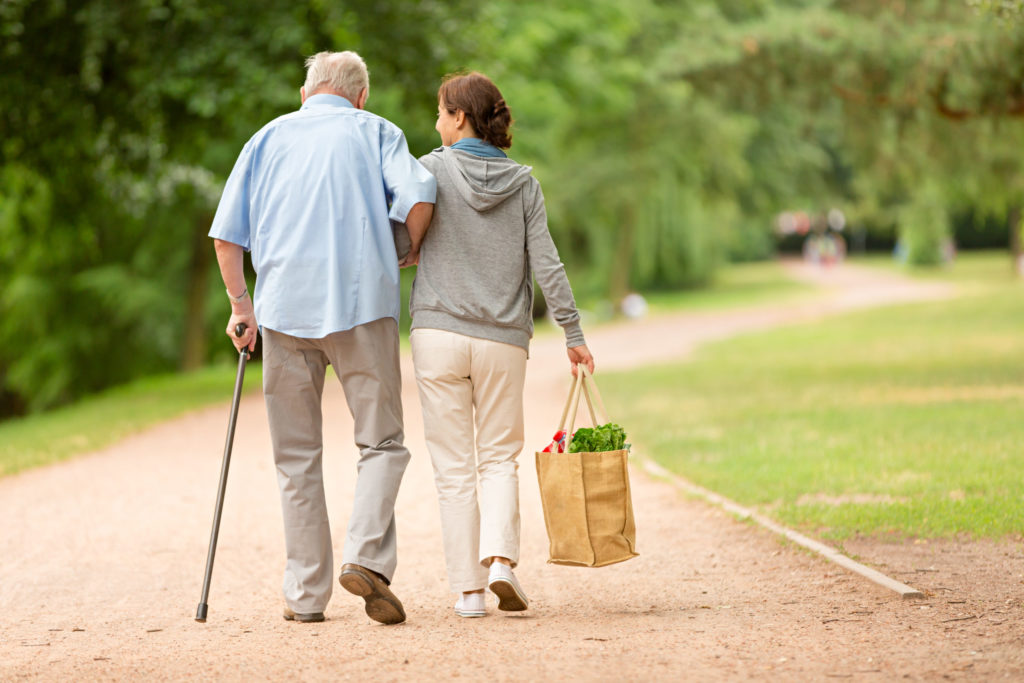There are all sorts of advantages for a senior who is active and mobile. They have the freedom to go out and enjoy what life has to offer, whether it’s visiting friends or family, a trip to the store, going on a walk, or even taking in local entertainment.
Even if someone can’t drive anymore or at least isn’t comfortable driving too far, they still may look for ways to get out whenever possible, since being able to interact with others is quite valuable, as well as simply enjoying your community. This is good for physical health as well as mental health.
Likewise, the opposite is true.
People who lack mobility may be more inclined to stay indoors. They may have mental or physical health conditions that affect mobility. They may lack certain resources, such as people to take them shopping. Their community also may lack resources such as public transportation or services for home-bound seniors. or poor resources, are more inclined.
Not being active can take its toll
A Baylor University study in 2019 concluded that the loss of mobility is directly connected to lack of activity, which increases the risk of all sorts of health conditions.
It warns about the risk of mobility impairment, which often can happen if someone is afraid of a fall. These fears can stem from knowing how disabling a fall can be, especially to someone who already doesn’t balance well. Or they can be from someone who has already had a bad fall and doesn’t want anything like that to happen again.
Falls can be particularly devastating. Besides a high risk of damage like broken bones or head injuries, they can also limit one’s freedom and affect overall quality of life. A bad fall that affects mobility in the short-term or long-term may also require relocating to a rehabilitation center or even an assisted living community.
The National Institute on Aging released similar research in 2020, showing that maintaining mobility as well as preventing disability can lower overall health risks.
For instance, someone who makes the effort to get out and enjoy themselves will be able to savor new experiences.
But someone who needs to stay at home will have fewer opportunities to do all of these things. They may lose strength, flexibility, and endurance, and increase feelings of fatigue. The risk is also higher for depression and anxiety, plus an overall weakening of the immune system. It becomes a vicious circle: it hurts to try, which can be discouraging. It also can increase fear of losing balance.
How to stay active – and mobile
Many health experts say that understanding the concept of active aging is vital. It means always taking steps to improve one’s overall health and mobility, or at least keeping them from growing worse.
There are some basic lifestyle choices that can help, such as stopping smoking and drinking, since these activities can do more harm than good. Although a little wine with dinner may have some health benefits, overall, cutting out or at least cutting down on alcohol can go a long way to helping overall health.
But one activity that just about everyone can try is to perform more physical activity on a regular basis.
Getting into the habit of walking regularly is a good starting place, and can be done inside or outside. Even if someone doesn’t want to walk through their neighborhood they can walk inside their house or yard. Or they can find a safe place to walk, such as a mall.
One study showed that a goal of 150 minutes of walking a week can lead to all sorts of benefits, including better endurance, better strength, better flexibility, and better balance – all things that can lead to better mobility.
This can be broken up into 20-30 minutes a day, which isn’t unreasonable.
Plus, walking, combined with other activities like strength training with small weights or bands can provide even more benefits. General stretching or yoga can also help with flexibility, balance, and posture, and can be done at a low impact and at low intensity.
Not only did these physical effects improve, but people’s confidence in their abilities and balance did as well.
Learn more
The concept of active aging is actually something the World Health Organization has been developing and implementing.
A focus on active aging looks at ways to improve quality of life by engaging in different areas of wellness, including emotional health, physical health, social health, spiritual health, intellectual health, professional health, and environmental health.
Finding opportunities to emphasize these areas can benefit everyone at all points of their lives, but especially seniors who may feel that some areas are lacking in their lives.
Communities that focus on active aging may see other positive results: seniors who want to remain in the workforce longer. Although there are some who have worked hard and have retired, others may find they miss aspects of the workforce, including social, financial, and intellectual.
Other opportunities to celebrate seniors and look at ways to improve their lives include the International Day of Older Persons, which the United Nations celebrates each Oct. 1.
The International Council on Active Living also celebrates Active Aging Week Oct. 2-8, an opportunity to learn and celebrate.

